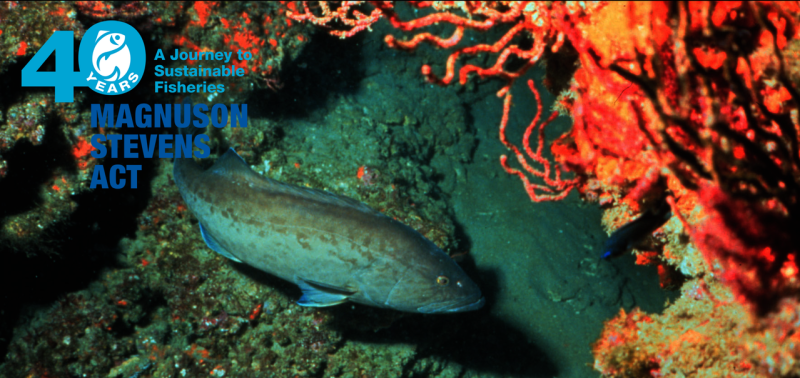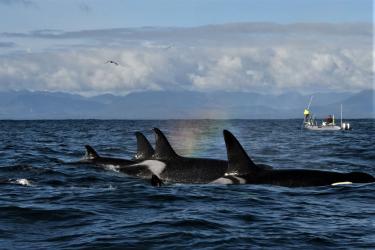It was April 13, 1976, when President Gerald Ford signed into law the Magnuson-Stevens Act, the platform on which America relies for the stewardship, sustainability, and recovery of the nation’s living marine resources. That same spring the NOAA Office of Law Enforcement, which had been established only four years prior, began to grow its ranks and Steve Springer was hired.
From entry-level officer to special agent in charge and retirement to now part-time training specialist, Springer has seen the NOAA enforcement program and the MSA mature through the past 40 years.
“It’s been a very rewarding and exciting journey,” said Springer.
Upon the passing of the MSA, and as the U.S. extended its jurisdiction from 12 to 200 miles, OLE announced 25 enforcement officer positions throughout the country.
“I applied for each one,” said Springer. “I gratefully accepted the first offer that came to me and I reported to duty on the docks of Gloucester (Mass.) as a brand new guy, implementing a brand new plan.
“I quickly learned that my job was much more than greeting the vessels at the docks and enforcing new regulations,” he said. “I realized that I needed to spend time working with the fishermen, explaining the many new regulations and giving them some time to adjust to this new law.”
To the U.S. fisherman plying the waters of the North Atlantic, the constraints of the MSA regulatory measures was a new experience. For the first time, anglers were seeing Federal permits, gear requirements, and restrictive catch limitations as they left port to pursue the cod, haddock, and yellowtail flounder.
“I learned, almost immediately, that the groundfish industry was only one of many stakeholders in this new world of living marine resource management,” said Springer. “Within weeks of beginning my new job, I found myself working with our scientists, port samplers, observers, fisheries managers, Council members, Coast Guard, and state officers as we started working out the ‘bugs’ in this new system of fisheries management.”
Springer explained that while he didn’t experience first-hand NOAA enforcement responsibilities before the MSA was enacted, he learned that there were many differences pre- and post-Act. One of the most extreme differences was monitoring the U.S. exclusive economic zone (EEZ).
“The foreign fleet was massive,” he said. “Their activities were monitored to ensure they did not encroach on the territorial waters of the U.S. But (the fleet) was allowed to fish, virtually unregulated, up to 12 miles from shore.”
The MSA changed all that by extending the EEZ to 200 miles, eventually eliminating competition from the foreign fishing fleets off the U.S. coasts. In addition to carefully watching the foreign fleets prior to the MSA, OLE agents were busy enforcing the Marine Mammal Protection Act (1972) and Endangered Species Act (1973). The early years of implementation and enforcement of these Acts was challenging for the enforcement arm of NOAA Fisheries. Agents and officers had to seek special training and education to fully understand the laws, the policies written therein, and the implementation plan.
“We had to be prepared to answer questions from the fishermen we were trying to educate,” said Springer. “But, we also had to fully comprehend what it is that we were enforcing.
“Looking back, my job those first few years in New England seems surreal,” he said. “I would get up in the dark and leave home in time to be on the docks in either Gloucester or Boston — as I was responsible for both ports — before sun up. After a busy morning of checking permits, gear, and monitoring the offloading of thousands of pounds of regulated groundfish, I would return to the office to write up cases, work on new regulatory language, and attend meetings.
“Standing on the docks back in those days, waiting to enforce the MSA, was just part of the job. You could stand there all day sometimes.”
A short two years after being hired, Springer accepted a position in OLE Headquarters. Much of his work for the following 20 years involved reviewing fishery management plans and amendments, providing advice and technical assistance on enforcement matters, suggesting improvements for the enforceability of management measures, and implementing regulations.
The ever-changing management measures and regulations were complex. And the number of federally-managed fish stocks grew exponentially.
“The management process, under the MSA, that began with relatively simple permit, gear and landing restrictions, evolved into management by closing or restricting access to large areas at sea, restricting days at sea, and implementing new and evolving catch-share programs,” Springer said.
He recalled that the federal request to expand the halibut and sablefish individual fishing quota in 1988 required congressional authorization for new hires.
“We didn’t have enough resources,” he said. “So they permitted us to build our uniformed enforcement officer program.”
Under the MSA, the new fisheries management programs gave rise not only to a new enforcement officer program but also to increased observer programs and the implementation of a Vessel Monitoring System (VMS). VMS began in Hawaii in 1994 as a pilot; upon expanding to each region, it became a national program in 2007. Springer, as part of the original VMS pilot team and observer program implementation, explained that the added capabilities made monitoring vessels much more cost effective and less labor and resource intensive by reducing the need for costly resources – both at-sea and air.
“All of these new, more complex methods of fisheries management required the Office of Law Enforcement to continue to adjust and modify its approach by providing the dedication and flexibility needed to maintain that strong support envisioned by Congress when they passed the MSA,” said Springer.
After rounding out his career with a short four years in Portland, Oregon, Springer retired in 2003 with 26 years serving the NOAA Office of Law Enforcement and the MSA. After moving to Georgia, he returned to the agency to work as an OLE training specialist at the Federal Law Enforcement Training Center, where he’s witnessed another operational change: an increased focus on illegal, unregulated, and unreported (IUU) fishing.
“OLE recognizes, first and foremost, that the vast majority of U.S. fishermen abide by our laws and comply with our fishing regulations,” said Springer. “They also recognize that there can be very high economic gains from illegal fishing and under-reporting or non-reporting of catches.
“Unfortunately, it is this activity which provides very strong incentives for a relatively few fishermen not to comply,” he said.
When this occurs, it hurts the honest fisherman, hurts the ability to achieve the goals set forth by the MSA, can result in overfishing, and may even create a need for more restrictive and costly regulations.”
As the U.S. continues to make progress to end overfishing in the nation’s EEZ, it’s able to turn more attention and collective energies to address the difficult challenges of IUU fishing practices.
“Through the collaborations established by the MSA, between enforcement officials, scientists, fishery management councils, fishing industries, conservationists, consumers, and international partners, the U.S. has a 40-year roadmap to success,” said Springer.
The progress seen in sustainability of the U.S. fisheries will continue through consistent enforcement and compliance efforts, as outlined by the MSA and conducted by OLE.



